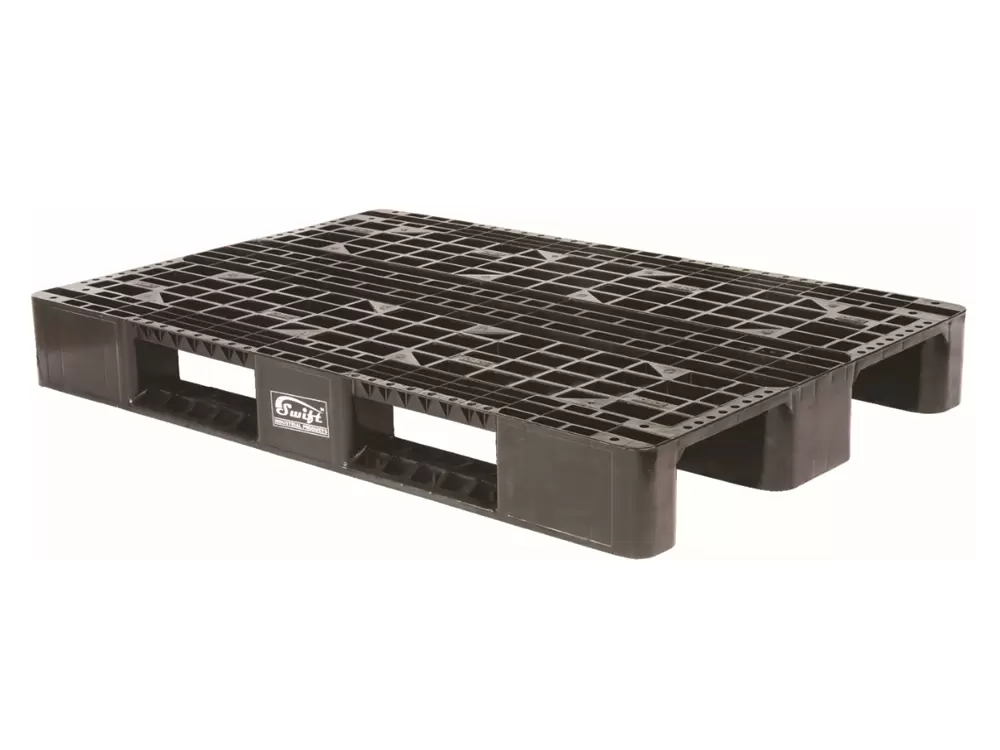The unassuming shipping export pallet is a cornerstone of the global economy. With the worldwide pallet market projected to reach $4 billion by 2023, understanding the significance of pallets across industries is paramount.
Why are Export Pallets Vital Across Industries, and How Can They Transform Your Company?
In this comprehensive blog, we delve into the fascinating world of export plastic pallets, exploring their pivotal role and potential impact on your company.
What is an Export Pallet?
An export pallet is a foundation for loading merchandise or other items for shipment. A “unit load” is created by stacking individual objects on a pallet, a frequently constructed wooden platform. Each unit has a robust and weight-bearing bottom thanks to the pallet, making it simple to move and load using a pallet jack, forklift, crane, or other handling equipment. When shipping containers abroad, you can fit a specific number of pallets (also known as load units) in a typical container with a length of 20 or 40 feet. Pallets, however, exist in various sizes and shapes, affecting how many may fit in a container.
How Much Load an Export Pallet Can Carry?
Most export pallet types can support loads of more than 1,000 kg, making them ideal for shipping heavy items. Your shipment may be moved and loaded more quickly and easily if combined into unit-loads of pallets. With their rectangular shape and clean, level surfaces, transport containers allow for rapid pallet transfer using forklifts of various sizes or numerous other loading vehicles. Pallet use is affordable daily since it is simple to store them in commercial or industrial buildings and handle them on level surfaces with little effort. At a distribution centre or its destination, a single worker may swiftly and easily disassemble a loaded pallet into its component pieces.
The quick answer is that they greatly simplify a lot of the routine logistics and storage operations. The shipping and packing professionals have explanations for this. Continue reading to discover the four benefits of palletising your products and how they may enhance the effectiveness and efficiency of your warehouse.
Here are the facts about export pallets
1. Export Pallets in Freight Transportation
Export Pallets play a crucial role in the transportation of freight, as many carriers require them for efficient and secure shipping. They streamline tracking, organizing, and unloading processes, making them indispensable in most industries. Cargo loaded directly onto the floor of a container, without pallets, is more susceptible to shifting during transit, often necessitating additional security measures like cargo straps or bars. Consequently, many carriers are hesitant to handle floor-loaded freight due to the extra labor involved in ensuring its security. If you need to ship floor-loaded items, it’s advisable to communicate with your logistics provider in advance.
2. The Interdependence Between Pallet and Forklift
The pallet and the forklift complement each other seamlessly. Together, these two technologies offer the most straightforward and efficient method of moving goods within a warehouse or loading dock. Forklifts are commonly utilized to lift and transport various types of shipping pallets.
Transporting floor-loaded freight without specialized equipment is significantly more challenging and time-consuming. With standard pallet handling tools such as forklifts and pallet trucks, warehouses can easily manage most palletized items. Removing these essential tools can greatly hinder a warehouse’s ability to handle freight efficiently, especially if items are not stored on pallets.
3. Optimizing Warehouse Efficiency: Vertical Storage with Export Pallets
Export Pallets have revolutionized storage solutions by making it possible to implement various vertical organizing options. Forklift operators can efficiently stack pallets on tall shelves, enabling merchandise to be stored on multiple shelves with a simple slotting-in process. Without pallets, using a vertical approach would require significant labor hours to place and remove products from high shelves.
However, it’s essential to ensure that the pallets you purchase are compatible with your warehouse’s organizing methods. Before implementing any vertically oriented storage strategies, confirm that the pallet specifications and dimensions align with your warehouse’s storage capacity. Ensure that your shelving appropriately supports the pallets and the weight of the stored merchandise.
4. Streamlining Tracing and Recycling through Palletization
Pallets play a crucial role in dividing products into manageable units for counting and tracing, which is essential for effective inventory management in any warehouse. Warehouse staff can efficiently track stock and monitor incoming and outgoing shipments using the barcode IDs on pallets, utilizing inventory systems such as pallet barcode scanners.
After delivery, many pallets remain useful for various additional purposes. In fact, in 2011 alone, companies sold again as pallets 326 million used pallets, while they recycled another 148 million, totaling 474 million recovered pallets. Despite the unfortunate reality that many pallets still end up in landfills, there are numerous methods to address this issue with some effort on your part. Encouraging cargo pallet manufacturers to recycle or reuse pallets is an excellent starting point. It aims to make your shipping operations more environmentally friendly.
Conclusion
In conclusion, while palletized shipping may not be suitable for every business, its widespread adoption within the industry, especially among B2B firms, underscores its significance. While small B2C companies may find parcel delivery sufficient for their needs, palletized shipping offers numerous advantages. These include enhanced efficiency in freight transportation, streamlined warehouse operations, and improved inventory management.
Ultimately, the decision to adopt palletized shipping will depend on individual business requirements and objectives.
Visit our website and start getting solutions today. Our dedicated plastic pallet experts are ready to assist you in making the right choice for your business!


